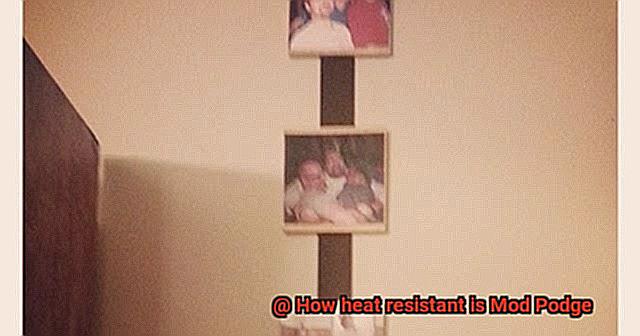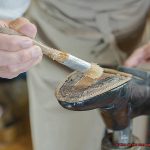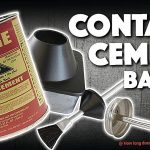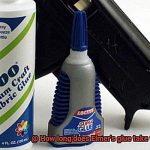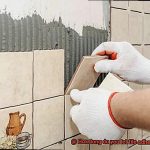Curious about Mod Podge’s heat resistance?
We all know this crafty adhesive is a powerhouse, but can it handle the heat? Today, we’re delving into the world of temperature tests to see just how tough Mod Podge really is.
Get ready to discover the secrets behind Mod Podge’s durability and find out if it can withstand the heat.
Heat Resistance Basics: How Hot Can Mod Podge Get?
Contents
- 1 Heat Resistance Basics: How Hot Can Mod Podge Get?
- 2 Standard Mod Podge Formulas: What Is Their Heat Resistance Level?
- 3 Excessive Heat and Its Effects on Mod Podge
- 4 Protective Sealants for Projects with Mod Podge
- 5 Specialized Formulas: What Are Their Heat Resistance Levels?
- 6 Testing the Heat Resistance of Materials with Mod Podge
- 7 Taking Proper Precautions to Ensure Longevity and Durability of Projects with Mod Podge
- 8 Conclusion
Mod Podge, the beloved crafting adhesive, opens up a world of creative possibilities. Yet, crafters often wonder about its heat resistance. In this article, we will explore how hot Mod Podge can get by considering factors like application thickness and duration of exposure to heat. By understanding these variables, you can confidently use Mod Podge in your projects while ensuring their longevity.
Understanding Mod Podge’s Composition:
Mod Podge primarily consists of a water-based formula, which generally offers lower heat tolerance than solvent-based adhesives. However, the inclusion of ingredients like polyvinyl acetate (PVA) glue and methyl cellulose enhances its thermal stability.
Factors Affecting Heat Resistance:
- Thickness of Application: Thicker layers of Mod Podge provide better insulation against heat. For optimal heat resistance, apply multiple thin coats rather than a single thick layer.
- Duration of Exposure: Mod Podge can withstand temperatures up to 150°F (65°C) without significant damage or loss of adhesion. However, prolonged exposure to high heat can soften or make it tacky. Avoid direct sunlight or placing Mod Podge-bonded items near intense heat sources like ovens or hot plates.
Preserving Heat Resistance:
To ensure your Mod Podge projects endure heat exposure and maintain their quality:
- Protective Sealant: Apply a clear acrylic spray or varnish as a protective sealant over dried Mod Podge. This extra layer acts as a barrier against heat and other environmental factors, preserving your project’s integrity.
- Specialized Formulas: Consider using specialized Mod Podge formulas like Outdoor or Dishwasher Safe versions if your project requires higher heat resistance. These formulas are designed to withstand more extreme conditions and are labeled accordingly.
- Material Compatibility: Some materials may have lower heat resistance than Mod Podge. Perform a small test by applying Mod Podge to a sample piece of the material and subjecting it to controlled heat to evaluate its compatibility.
Standard Mod Podge Formulas: What Is Their Heat Resistance Level?
Mod Podge, a beloved crafting adhesive renowned for its versatility, is often questioned about its heat resistance level. This article aims to delve into the heat resistance of standard Mod Podge formulas and compare them to specialized formulas, offering a comprehensive overview of this topic.
Standard Mod Podge Formulas
Gloss, Matte, and Satin:
- These formulas are not specifically designed to withstand high temperatures.
- Best suited for decoupage and crafting projects with minimal heat exposure.
- Avoid direct heat sources like ovens or stovetops, which can soften or make the adhesive tacky.
Moderate Heat Resistance:
- Standard Mod Podge formulas can handle moderate heat levels, such as hot beverages or warm plates, without significant damage.
- Suitable for normal daily use but not recommended for extreme heat conditions.
Specialized Mod Podge Formulas:
Mod Podge Dishwasher Safe Formula:
- Specifically designed to withstand high temperatures and moisture.
- Ideal for projects involving dishware or items that require washing.
Mod Podge Super Hi-Shine Formula:
- Offers enhanced heat resistance compared to standard formulas.
- Perfect for projects requiring a glossy and durable finish, such as tabletops or coasters.
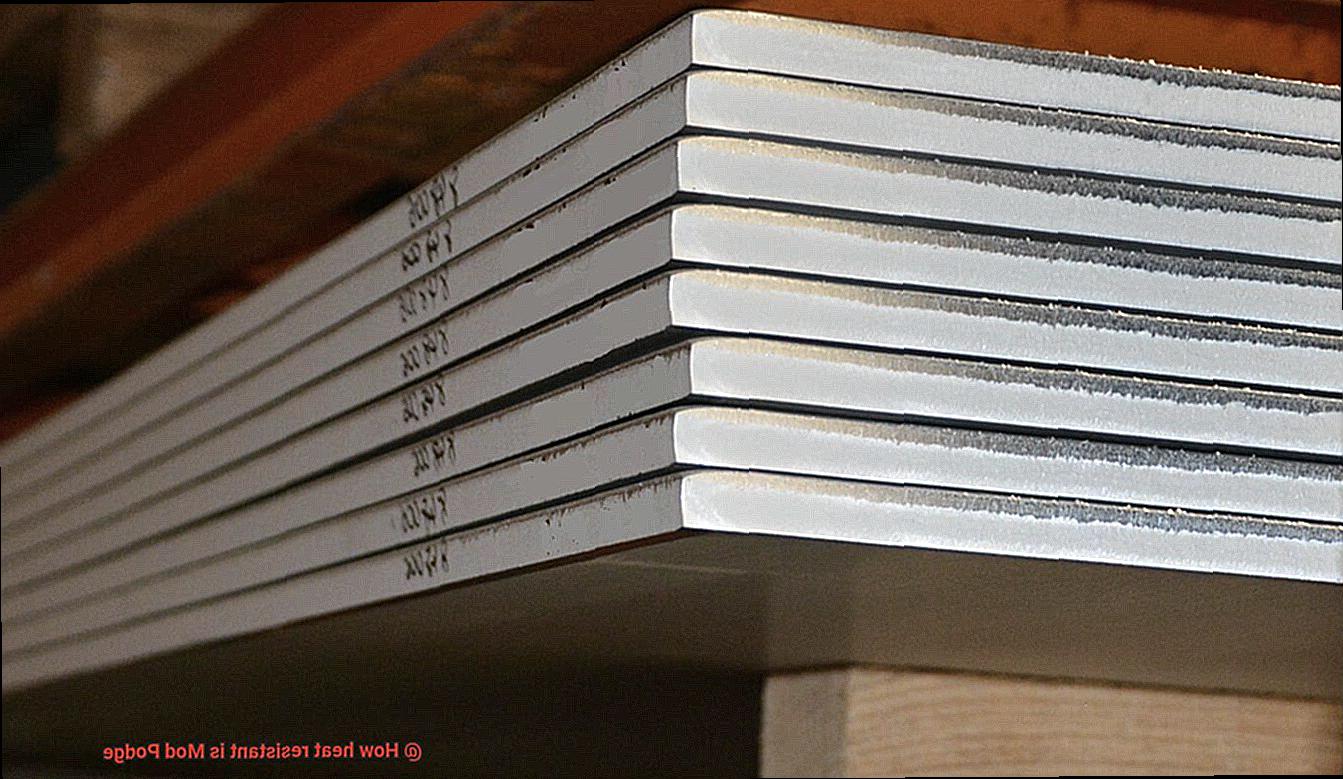
Choosing the Right Formula:
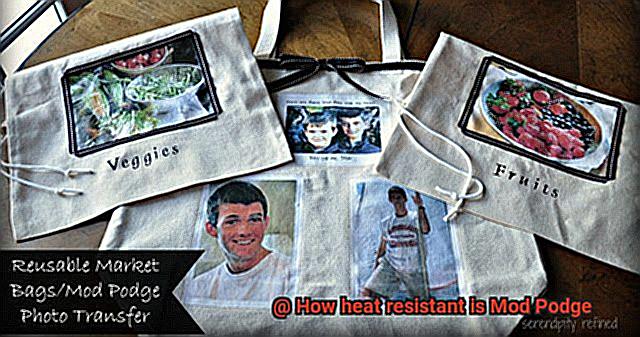
Read Instructions and Labels:
- Each Mod Podge formula has specific usage recommendations and heat resistance levels.
- Take the time to understand these instructions to choose the appropriate formula for your project.
Consider Project Requirements:
- Assess the heat exposure your project may encounter.
- Opt for specialized formulas like Dishwasher Safe or Super Hi-Shine if higher heat resistance is needed.
Excessive Heat and Its Effects on Mod Podge
Excessive heat can have a profound impact on the durability and performance of Mod Podge, the beloved water-based adhesive. When faced with high temperatures, Mod Podge is susceptible to softening, melting, or becoming tacky, thereby compromising its adhesive properties and leaving your projects at risk.
One of the primary concerns associated with exposing Mod Podge to excessive heat is the potential for glued items to come loose. As the heat intensifies, the adhesive weakens, resulting in detachment. This becomes especially problematic for projects involving coasters or trivets meant to withstand the heat of hot dishes. The intense temperature emitted by these dishes can transfer to the Mod Podge, causing it to soften or even melt away entirely.
But that’s not all. Excessive heat can also lead to discoloration and warping. Over time, Mod Podge has a tendency to yellow when subjected to high temperatures. Imagine your once stunning, light-colored project transformed into an unappealing shade of yellow. Not exactly what you had in mind.
However, there is a glimmer of hope. Certain types of Mod Podge are designed to be heat resistant. The dishwasher-safe formula, for example, can handle higher temperatures without succumbing to their effects. Nevertheless, even these heat-resistant variations have their limits – they are not invincible.
So how can you safeguard your Mod Podge creations from excessive heat? Here are a few valuable tips:
- Avoid placing hot items directly on surfaces coated with Mod Podge.
- Utilize coasters or trivets beneath hot dishes as an added layer of protection.
- Store your projects in a cool and dry environment, far from direct sunlight or any sources of heat.
Remember, prevention is key. While Mod Podge is an exceptional adhesive for crafts, it is not impervious to excessive heat. Therefore, take the necessary precautions and shield your projects from scorching temperatures.
Protective Sealants for Projects with Mod Podge
If you’re a fan of Mod Podge and all the incredible creations you can make with it, then I have some vital information just for you. Today, we’re going to dive into the world of protective sealants for projects involving Mod Podge, especially those that may be exposed to heat. So grab your glue guns and get ready for a fascinating journey.
Mod Podge is a versatile adhesive that can stick just about anything together. But when it comes to heat resistance, it does have its limitations. Picture this: spending hours crafting a beautiful candle holder, only for it to turn into a sticky mess when the candle is lit. Not exactly the outcome you were hoping for, right?
That’s where a protective sealant comes to the rescue. By applying a protective sealant, you add an extra layer of defense to your project, shielding it from heat and potential damages. So let’s explore some options you can consider:
- Clear Acrylic Sealer Spray: This popular choice creates a protective barrier over your project, safeguarding it from the effects of heat. Just make sure to select a sealer that is compatible with Mod Podge and follow the manufacturer’s instructions for application.
- Heat-Resistant Varnish or Resin: For even greater heat resistance, opt for these specially designed products that can withstand high temperatures. Apply them over your Mod Podge and other adhesives to achieve a durable and heat-resistant finish.
However, keep in mind that even with the use of a protective sealant, it’s still recommended to avoid exposing your Mod Podge projects to excessive heat whenever possible. Heat can still impact the durability and longevity of your masterpiece, even with added protection.
Specialized Formulas: What Are Their Heat Resistance Levels?
If you’ve ever wondered about the heat resistance levels of specialized Mod Podge formulas, then you’re in luck. Today, we delve into the glue world and explore how to select the perfect formula for your project based on its intended use. So grab your crafting supplies because it’s time to dive in.
Let’s start with the OG of Mod Podge formulas, the beloved Original formula. This classic adhesive offers a decent level of heat resistance, capable of withstanding temperatures up to 176 degrees Fahrenheit (80 degrees Celsius) once fully cured. It’s perfect for projects that may encounter warm drinks or moderate levels of heat.
But what if you need something that can handle more heat? Introducing Dishwasher Safe Mod Podge. Specifically formulated to endure high temperatures and water exposure, this formula can resist temperatures up to 200 degrees Fahrenheit (93 degrees Celsius) once fully cured. It’s ideal for projects involving dishware or items that require regular washing.
If you’re taking your crafts outdoors, then Outdoor Mod Podge is your go-to option. With a heat resistance level of up to 150 degrees Fahrenheit (66 degrees Celsius), this formula is specially designed to withstand outdoor elements like heat, cold, and moisture. Think garden decor or painted outdoor furniture – this formula has got you covered.
Let’s not forget about Hard Coat Mod Podge and Super Gloss Mod Podge. While these formulas offer unique properties and finishes, it’s essential to check their specific heat resistance levels before using them in projects exposed to heat.
It’s important to note that Mod Podge is not suitable for extreme heat exposure or direct contact with flames. So if you plan on turning up the heat or cozying up by a fire, it’s best to keep your Mod Podge-sealed creations at a safe distance.
Testing the Heat Resistance of Materials with Mod Podge
When it comes to heat-sensitive projects like coasters or trivets, it’s crucial to ensure that Mod Podge can handle the heat. To conduct a heat resistance test, you’ll need a heat-resistant material such as glass or ceramic. Start by applying a layer of Mod Podge onto the material and then subject it to different levels of heat. You can use an oven or a hotplate for this experiment.
Now, let’s talk about the nitty-gritty details. Mod Podge isn’t specifically designed as a heat-resistant adhesive. Its primary purpose is bonding and sealing, so it may have limitations when exposed to high temperatures. However, many crafters have successfully used Mod Podge on heat-sensitive projects with impressive results.
During the testing process, it’s best to start with lower temperatures and gradually increase them. This allows you to gauge Mod Podge’s heat resistance capabilities without risking any sudden damage or failure. It’s also important to note that different types of Mod Podge may have varying heat resistance properties. For example, Outdoor Mod Podge is specially formulated to withstand temperature fluctuations, while Matte or Gloss formulas may be less resistant.
Don’t forget to consider the specific materials you’re using alongside Mod Podge. Some materials, like paper or fabric, may be more susceptible to heat damage than others. By conducting tests with various materials, you’ll gain valuable insights into their compatibility with Mod Podge under different heat conditions.
While Mod Podge can handle moderate levels of heat, it’s not suitable for applications involving direct contact with flames or very high temperatures. In those cases, it’s best to explore specialized heat-resistant adhesives specifically designed for those purposes.
Remember, when working on heat-sensitive projects with Mod Podge, take precautions and avoid direct exposure to excessive heat sources. This will help maintain the integrity and longevity of the adhesive.
Taking Proper Precautions to Ensure Longevity and Durability of Projects with Mod Podge
If so, you’ve come to the right place. In this article, we’ll explore the importance of taking proper precautions to ensure the longevity and durability of your Mod Podge projects. From choosing the right surface to handling with care, we’ll cover all the necessary steps. So grab your glue and let’s get started.
Choose the Right Surface:
Not all surfaces are created equal when it comes to Mod Podge. While it works well on materials like wood, fabric, and paper, some surfaces may require additional preparation. Clean your surface thoroughly and consider using a primer or base coat to improve adhesion.
Prepare the Surface:
Before applying Mod Podge, prepare your surface by ensuring it is clean, dry, and free from any dust or debris. A simple soap and water solution can work wonders. This step ensures that your Mod Podge adheres properly and creates a strong bond.
Apply Thin and Even Coats:
Less is more when it comes to Mod Podge application. Avoid piling it on too thickly, as this can lead to bubbling or wrinkling. Instead, apply multiple thin coats, allowing each layer to dry completely before adding the next one. This will result in a smooth and durable finish.
Protect from Heat Sources:
While Mod Podge offers some heat resistance, it’s important to protect your projects from excessive heat sources. Avoid placing them near stovetops, ovens, or heaters as high temperatures can cause the Mod Podge to soften or melt. Consider using a heat-resistant sealer or topcoat for added protection.
Handle with Care:
Treat your Mod Podge projects like the masterpieces they are. Avoid dropping or mishandling them, as this can lead to cracks or chips in the Mod Podge layer. If you do notice any damage, address it immediately to prevent further deterioration.
rllB-vn3zx4″ >
Conclusion
In conclusion, Mod Podge proves itself to be a versatile adhesive with a respectable level of heat resistance. While its standard formulas – Gloss, Matte, and Satin – can handle moderate levels of heat, they aren’t specifically designed for scorching temperatures. To avoid any mishaps, it’s crucial to steer clear of direct heat sources and prolonged exposure to high temperatures, as this could lead to unwanted softening or tackiness.
To bolster the heat resistance of your Mod Podge projects, it is highly recommended to apply a protective sealant. By utilizing a clear acrylic spray or varnish, you create an impenetrable barrier against not just heat but also other environmental factors that could jeopardize the integrity of your masterpiece. For more specialized applications that demand heightened heat resistance, consider exploring formulas like Dishwasher Safe Mod Podge or Super Hi-Shine Mod Podge.
However, don’t forget the importance of conducting compatibility tests and controlled heat resistance experiments before fully entrusting your project to Mod Podge. While it can certainly handle moderate levels of heat, it simply isn’t cut out for direct contact with flames or extremely high temperatures.
By adhering to proper precautions throughout your crafting journey – from selecting suitable surfaces to handling your creations with utmost care – you can rest assured knowing that your Mod Podge projects will enjoy long-lasting durability.

